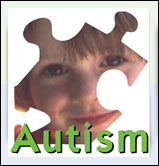Collaborative Programs of Excellence in Autism (CPEAs): Network on the Neurobiology and Genetics of Autism—Where do we go from here?
 The end of the CPEA Network does not signal the end of NIH-supported research on autism. Instead, the NIH is consolidating research opportunities that are currently conducted by multiple Institutes into a single autism research program to maximize coordination and cohesion of these efforts. All of the projects conducted under the new Autism Centers of Excellence (ACE) program will address topics listed in the Autism Research Matrix—a list of action items related to autism research developed by a panel of expert scientists and the public.
The end of the CPEA Network does not signal the end of NIH-supported research on autism. Instead, the NIH is consolidating research opportunities that are currently conducted by multiple Institutes into a single autism research program to maximize coordination and cohesion of these efforts. All of the projects conducted under the new Autism Centers of Excellence (ACE) program will address topics listed in the Autism Research Matrix—a list of action items related to autism research developed by a panel of expert scientists and the public.
Many CPEA researchers have submitted applications to the ACE program, in hopes of continuing their important research on autism. The review of ACE applications will begin in early November.
Most importantly, the experiences with the CPEA have changed how the principal investigators (PIs) interact with other researchers. They report that have truly become colleagues, not just with other researchers in the Network, but also with researchers from other disciplines that they have worked with at their own centers.
"Our group included experts from the most molecular to the most clinical," explained Dr. Patricia Rodier, PI for the CPEA at the University of Rochester Medical Center. "At the beginning, I wasn't sure how well we would be able to communicate with each other. But, because no one was afraid to admit when they didn't understand, and because the experts were so skilled at explaining their work to each other, we all learned a lot."
"It has been wonderful to work with so many talented people who would not otherwise have worked in autism," said Dr. Nancy Minshew, PI for the CPEA at the University of Pittsburgh Medical Center. "All of this [research] has countered the myths that there is no collaboration among scientists and that there is no worthy science to be funded. It has been a remarkable resource."
"There are three words that capture the success of the CPEA: inter-disciplinary, collaborative, and innovative," remarked Dr. Geraldine Dawson, PI for the University of Washington CPEA site. "The NIH envisioned a very different kind of science and helped that to become a reality by funding the CPEA. Today, autism research requires integration of methods and expertise from a wide range of disciplines and collaboration across many laboratories. This kind of collaborative innovation is rapidly changing the field of autism and offers real hope for significant discoveries."
In addition to funding the ACE program with other NIH Institutes, the NICHD will continue to play an active role in autism research. NICHD liaisons will continue to serve on both the NIH Autism Coordinating Committee—a group formed in 1997 at the request of congress to enhance the quality, pace and coordination of autism research efforts at the NIH—and the Interagency Autism Coordinating Committee—a group formed in response to the Children's Health Act of 2000 to coordinate autism research and other efforts across the U.S. Department of Health and Human Services.
Several CPEA Network investigators will continue to work with the NICHD through the Baby Siblings Research Consortium, which currently includes projects funded for the next five years, and through the other collaborative projects that were borne out of the last 10 years of Network research.
"One of the greatest things about the CPEA Network experience was having the opportunity for many diverse collaborations within our program and across the Network," said Dr. Minshew. "What a great experience this has been."
"This has been the best experience of my research career," added Dr. Patricia Rodier.
Indeed, the CPEA Network has been a remarkable experience for everyone involved. We will feel its impact well into the future.
 BACK TO TOP
BACK TO TOP